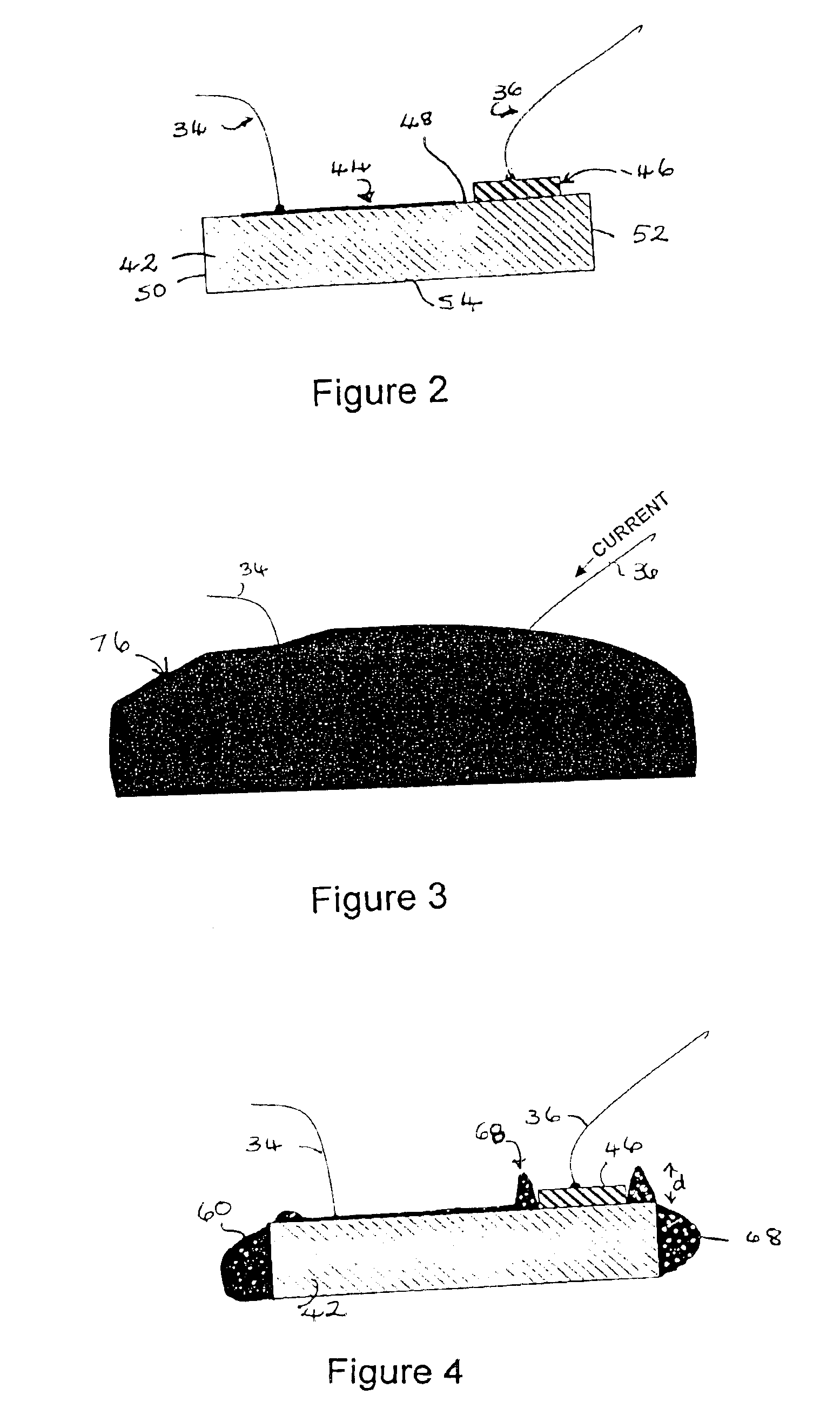LED cross-linkable phosphor coating
a cross-linkable phosphor coating and cross-linkable technology, which is applied in the manufacture of electrode systems, electric discharge tubes/lamps, and discharge tubes luminescnet screens, etc., can solve the problems of reducing the light output, so as to increase the intensity of the converted light output
- Summary
- Abstract
- Description
- Claims
- Application Information
AI Technical Summary
Benefits of technology
Problems solved by technology
Method used
Image
Examples
Embodiment Construction
[0029]A phosphor coating with self adjusting variable thickness is made by combining at least one phosphor with a material which is curable by light of a selected wavelength. The phosphor-impregnated curable material is applied to a die (laser diode or light emitting diode). Light from the die is then used to cure the material to a thickness that varies across the die in relation to the intensity of the light emitted.
[0030]With reference to FIG. 1, a light source, such as a lamp 10, includes a cup-shaped reflector housing 12, which is coated on its interior surface with a reflective coating 14 capable of reflecting light in the UV and visible range of the electromagnetic spectrum. As used herein, the term “light” encompasses radiation in the UV and IR regions of the electromagnetic spectrum in addition to light in the visible region of the spectrum—i.e., all radiation emitted by or generated within the light source.
[0031]The reflector housing 12 may have a variety of configurations ...
PUM
 Login to View More
Login to View More Abstract
Description
Claims
Application Information
 Login to View More
Login to View More - R&D
- Intellectual Property
- Life Sciences
- Materials
- Tech Scout
- Unparalleled Data Quality
- Higher Quality Content
- 60% Fewer Hallucinations
Browse by: Latest US Patents, China's latest patents, Technical Efficacy Thesaurus, Application Domain, Technology Topic, Popular Technical Reports.
© 2025 PatSnap. All rights reserved.Legal|Privacy policy|Modern Slavery Act Transparency Statement|Sitemap|About US| Contact US: help@patsnap.com



